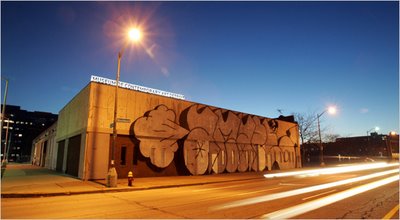
Just last weekend, my church, Oxford Circle Mennonite, celebrated its 60th anniversary. I had been commissioned to make a painting in commemoration of the event, and also for the 80th birthday of one of our long-time members and deacons.
The painting is titled Abide, and is inspired by the passage in 1 Peter 2: 4-12, which we have been forming the anniversary celebration and theme around:
"As you come to him, the living Stone—rejected by men but chosen by God and precious to him— you also, like living stones, are being built into a spiritual house to be a holy priesthood, offering spiritual sacrifices acceptable to God through Jesus Christ. For in Scripture it says: 'See, I lay a stone in Zion, a chosen and precious cornerstone, and the one who trusts in him will never be put to shame.' Now to you who believe, this stone is precious. But to those who do not believe, 'The stone the builders rejected has become the capstone', and, 'A stone that causes men to stumble and a rock that makes them fall.' They stumble because they disobey the message—which is also what they were destined for.
But you are a chosen people, a royal priesthood, a holy nation, a people belonging to God, that you may declare the praises of him who called you out of darkness into his wonderful light. Once you were not a people, but now you are the people of God; once you had not received mercy, but now you have received mercy. Dear friends, I urge you, as aliens and strangers in the world, to abstain from sinful desires, which war against your soul. Live such good lives among the pagans that, though they accuse you of doing wrong, they may see your good deeds and glorify God on the day he visits us."
From this scripture I took some inspirations for the symbols, and the way the painting would look; especially since our particular body clearly sees ourselvese as participants in the dynamics Peter mentions in this passage. From "living Stone/stones" I made a background of bricks, a more urban version of a spiritual building material. And from this material, a "spiritual house" is being built, by each life that is given to the life of the church body. I've included a house shape, combined with a keystone shape -- my version of "capstone", or "cornerstone" -- which houses the presence and indwelling of the Holy Spirit in the form of a cloud/flower shape; echoing the Old Testament presence of God seen in the Pillar of Cloud (Exodus 13:21: By day the LORD went ahead of them in a pillar of cloud to guide them on their way and by night in a pillar of fire to give them light, so that they could travel by day or night).
Doing a painting as a commemoration for such an entity as a church body is challenging, since the whole idea of a church, really, is an extremely mystical and mysterious, and at the same time utterly corporeal and flesh-bound, concept: it is, in fact, where those two worlds collide; clash even. And also, I needed to keep in mind the fact that many people in my church had little experience with contemporary art, especially in the forms and motifs which I normally use. And I am the "missing link" between those two worlds which I love so much. So, I made a piece which I think is largely understandable; connected to the scripture -- which is really just as initially inscrutable as much art, but more familiar, anyway, to the general church population -- and yet still well within my particular style of working. I've found myself explaining this painting more than I normally like, but I see it as an exercise in helping people "catch up" to the tradition of art-making which has continued over the past fifty years, but largely out of sight and grasp of the large percentage of the population. I've learned more than anyone, I think, in the whole process. And that's another thing I love about making art...and educating.
Read more...
 (above, facade of Mocad, or Museum of Contemporary Art, Detroit; thanks to the NY Times).
(above, facade of Mocad, or Museum of Contemporary Art, Detroit; thanks to the NY Times).







